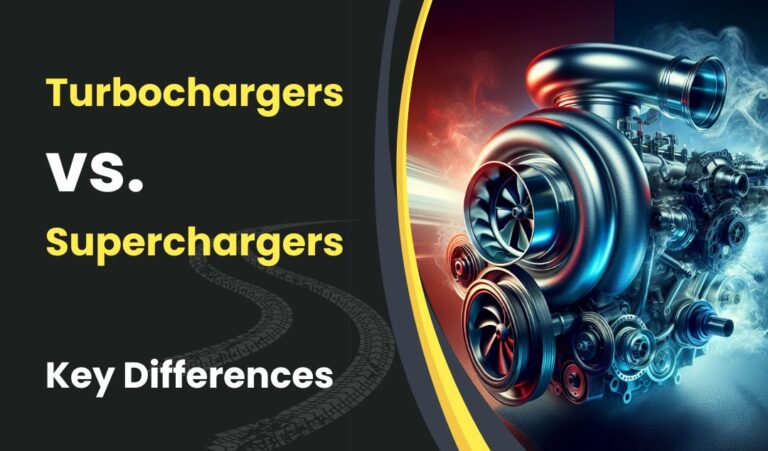Engine Problems: How to Diagnose and Fix Common Issues

Engine problems can be a major headache for vehicle owners. When a car’s engine starts acting up, it can lead to stress, inconvenience, and potentially costly repairs. Understanding common engine issues, their symptoms, and how to diagnose them is crucial for every driver. This knowledge can help prevent minor problems from escalating into major breakdowns and save time and money in the long run.
This article will explore the most frequent engine problems and their telltale signs. It will also provide guidance on how to diagnose these issues and offer tips for DIY fixes for minor engine troubles. Additionally, the article will discuss when it’s necessary to seek professional help for engine repair. By the end, readers will have a better understanding of how to keep their engines running smoothly and what to do when problems arise.
Common Engine Problems and Their Symptoms
Get peace of mind with our comprehensive diagnostic check., Right at your Doorstep!
Misfiring Engine
Engine misfires occur when one or more cylinders fail to produce power. This can result in slower acceleration, shaking during acceleration, or hesitation. At idle, the engine might vibrate more than usual and run unevenly. Misfires can happen when the engine is cold or warm and may occur intermittently. Common causes include faulty spark plugs, clogged fuel injectors, or issues with the ignition system.
Overheating
An overheating engine is a serious concern that can lead to significant damage. Symptoms include steam rising from under the hood, a temperature gage spiking to “H” or into the red, and a burning smell. Causes may include low coolant levels, a malfunctioning water pump, or a failing radiator. If you notice these signs, pull over safely, turn off the engine, and allow it to cool down before seeking professional assistance.
Loss of Power
A noticeable decrease in engine power can manifest as sluggish acceleration or difficulty maintaining speed. This issue may stem from various factors, including clogged air filters, fuel system problems, or sensor malfunctions. If you experience a sudden loss of power while driving, it’s crucial to have your vehicle inspected by a qualified mechanic to identify and address the underlying cause.
Unusual Noises
Strange engine noises can indicate various problems. Knocking or tapping sounds might suggest issues with the valvetrain or piston components. Grinding noises could point to worn bearings in accessory pulleys. Hissing or puffing sounds may indicate a leak in the exhaust system. Pay attention to any unusual noises and have them investigated promptly to prevent further damage.
Get peace of mind with our comprehensive diagnostic check., Right at your Doorstep!
Excessive Exhaust Smoke
The color of exhaust smoke can provide clues about engine issues. White smoke might indicate coolant leaking into the combustion chamber, possibly due to a blown head gasket. Blue smoke suggests oil burning, which could result from worn valve seals or piston rings. Black smoke often points to an overly rich fuel mixture, possibly caused by faulty fuel injectors or sensors. Any persistent smoke warrants immediate attention from a professional mechanic.
Diagnosing Engine Issues
Using OBD-II Scanner
Since 1996, all cars have been equipped with On-Board Diagnostics (OBD) systems. To access this information, a scanner is needed. When the check engine light is on, connecting the scanner to the OBD port allows for trouble code retrieval. These codes provide insights into potential issues, such as exhaust gas recirculation flow problems or lean fuel mixture. However, it’s important to note that codes only indicate symptoms, not root causes. Further investigation is often necessary to pinpoint the exact problem.
Visual Inspection
A thorough visual inspection can identify 10% to 30% of engine performance problems. Look for obvious issues like fuel leaks, disconnected vacuum hoses, corroded connectors, or signs of animal nests in the air cleaner. Check the coolant level and condition, but be cautious when inspecting a hot radiator. Examine belts, hoses, and other visible components for wear or damage.
Listening for Unusual Sounds
Engine noises can provide valuable diagnostic information. Common sounds include:
- Squealing: Often indicates issues with engine belts
- Grinding or rattling: May suggest worn bearings in accessory pulleys
- Clicking and tapping: Could be related to valve train problems
- Puffing or hissing: Potentially signals exhaust leaks or valve issues
- Knocking: Might indicate problems with the crankshaft, bearings, or pistons
Checking Fluid Levels
Inspect oil, coolant, brake fluid, power steering fluid, and transmission fluid levels and condition. Low or contaminated fluids can cause various engine problems. For example, milky-colored oil might indicate coolant leakage into the engine.
Analyzing Performance Changes
Pay attention to changes in engine performance, such as decreased power, poor acceleration, or reduced fuel economy. Difficulty starting, abnormal idling, or power loss can be indicators of underlying engine issues. These symptoms, combined with other diagnostic methods, can help identify the root cause of engine problems.
Get peace of mind with our comprehensive diagnostic check., Right at your Doorstep!
DIY Fixes for Minor Engine Problems
Many minor engine problems can be addressed by vehicle owners with basic tools and knowledge. These simple fixes can improve engine performance and prevent more serious issues.
Replacing Spark Plugs
Spark plugs play a crucial role in engine performance. When they wear out, they can cause misfires and reduced fuel efficiency. To replace spark plugs:
- Locate the spark plugs in the engine bay
- Remove the old plugs using a spark plug socket
- Check the new plugs’ gap and adjust if necessary
- Install the new plugs, being careful not to overtighten
Changing Oil and Filter
Regular oil changes are essential for engine health. To change oil and filter:
- Warm up the engine to allow oil to drain easily
- Locate and remove the oil drain plug
- Allow oil to drain completely
- Replace the drain plug with a new washer
- Remove the old oil filter and replace with a new one
- Add fresh oil to the recommended level
Cleaning or Replacing Air Filter
A clean air filter ensures proper airflow to the engine. To clean or replace:
- Locate the air filter housing
- Remove the old filter
- Clean the housing of any debris
- Install a new filter or clean the existing one if reusable
Tightening or Replacing Belts
Engine belts can become loose or worn over time. To address belt issues:
- Inspect belts for cracks or fraying
- Check belt tension (should have about 1/4 inch of play)
- Adjust tension if necessary or replace if worn
Flushing the Cooling System
Flushing the cooling system helps maintain optimal engine temperature. To flush:
- Drain the old coolant
- Flush the system with water
- Add new coolant/antifreeze mixture
- Bleed air from the system by running the engine with the heater on
When to Seek Professional Help
While some minor engine issues can be addressed through DIY methods, certain problems require the expertise of professional mechanics. Here are situations where seeking professional help is crucial:
Complex Electrical Issues
Modern vehicles rely heavily on complex electrical systems. When dealing with issues involving the ECU, sensors, or other electronic components, professional diagnostic tools and expertise are essential. Scan tools and oscilloscopes are used to retrieve diagnostic trouble codes and analyze electrical signals, helping pinpoint problems that may not be apparent through visual inspection alone.
Internal Engine Damage
If you hear knocking or thumping noises from your engine, it could indicate worn rod bearings or other internal damage. These issues require immediate attention from a professional to prevent catastrophic engine failure. Similarly, if you notice excessive exhaust smoke or a significant loss of power, it’s time to consult an expert.
Transmission Problems
Transmission issues can be complex and costly. Signs such as difficulty shifting gears, slipping gears, or unusual noises during gear changes warrant professional inspection. Transmission problems can quickly escalate if left unaddressed, potentially leading to complete transmission failure.
Timing Belt Replacement
Replacing a timing belt is a critical and intricate task that requires specific tools and expertise. It’s typically recommended every 60,000 to 90,000 miles, depending on the vehicle. Failure to replace a worn timing belt can result in severe engine damage, especially in interference engines where valves and pistons can collide if the belt breaks.
Engine Rebuilds or Replacements
When faced with major engine problems, rebuilding or replacing the engine may be necessary. This decision requires careful consideration of factors such as the vehicle’s age, overall condition, and the cost-effectiveness of the Auto repair. Professional mechanics can provide valuable insights and perform these complex procedures to extend your vehicle’s lifespan.
Get peace of mind with our comprehensive diagnostic check., Right at your Doorstep!
Conclusion
Understanding and addressing engine problems is crucial for every vehicle owner. This article has explored common issues, their symptoms, and methods to diagnose them. It has also provided guidance on DIY fixes for minor troubles and highlighted situations that call for professional help. By staying alert to warning signs and taking prompt action, drivers can keep their engines running smoothly and avoid costly breakdowns.
Regular maintenance and quick responses to engine issues have a big impact on a vehicle’s longevity and performance. Whether it’s replacing spark plugs, changing oil, or seeking expert help for complex problems, being proactive is key. Remember, your engine is the heart of your vehicle, and taking care of it ensures a smoother, safer, and more economical driving experience in the long run.
FAQs
Q: How can I identify if there’s an issue with my engine?
A: To determine if your engine might be failing, watch for these seven signs: the Check Engine light turning on, frequent overheating, a drop in fuel efficiency, loss of engine power, the engine stalling, a rough idle, or unusual noises and vibrations.
Q: Which three systems should be inspected for potential engine problems?
A: When assessing engine issues, it is crucial to examine the ignition system, the fuel injection system, and the emissions system. Components such as spark plugs, spark plug wires, oxygen sensors, vacuum hoses, fuel filters, and air filters might need to be replaced during this check.
Q: What are the primary reasons for engine malfunctions?
A: The three main causes of engine problems include detonation (abnormal combustion due to excessive heat and pressure in the combustion chamber), neglecting regular oil changes, and failing to maintain the coolant system.
Q: What is the most frequent cause of engine failure in cars?
A: The most common cause of engine failure is neglecting regular engine maintenance. Skipping routine services like oil changes, timing belt replacements, and coolant system upkeep can lead to severe issues such as difficulty starting, overheating, and total engine failure.





